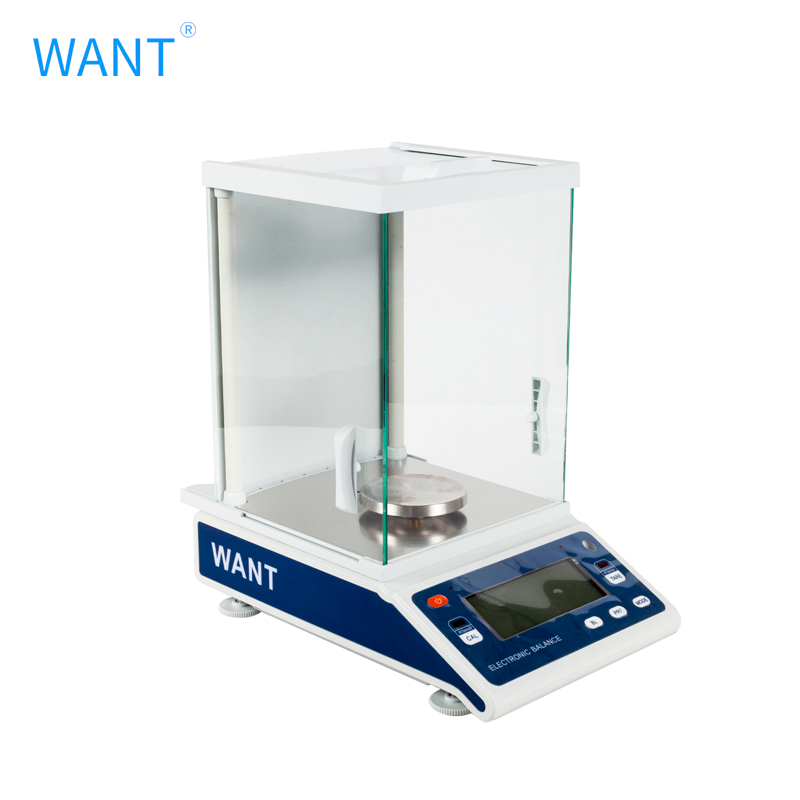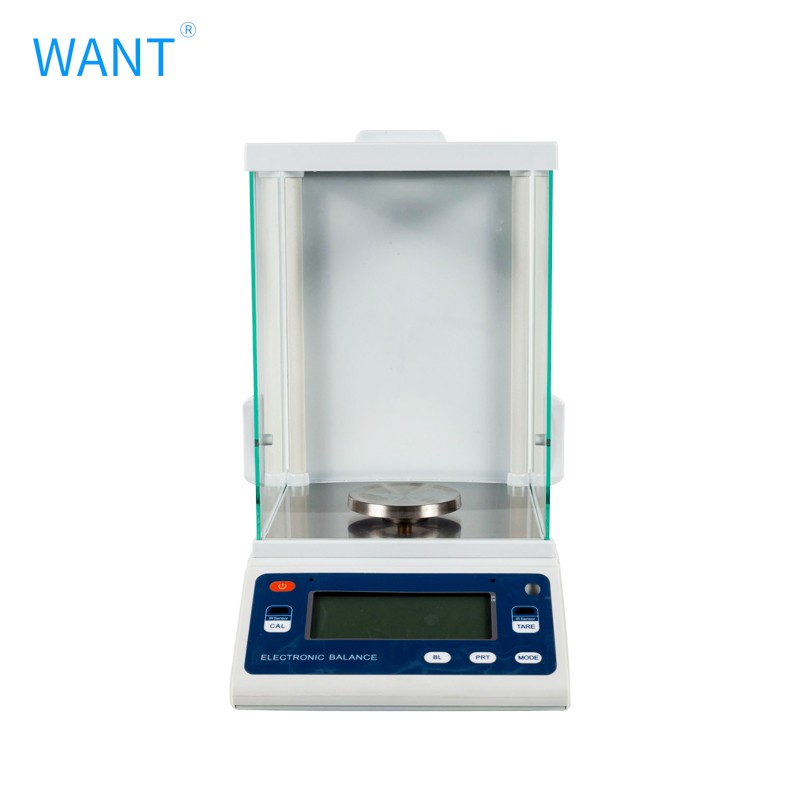Unveiling the Micro Analytical Balance
 Jun 19, 2023|
Jun 19, 2023| View:1285
View:1285The micro analytical balance, known for its exceptional accuracy, plays a vital role in determining the precise weight of delicate objects. With its capability to measure with an accuracy of 0.01mg, this balance surpasses its macro counterpart by an additional decimal place, resulting in significantly more accurate outcomes.

Structure and Components:
Comprising several key components, the micro analytical balance shares a similar structure with the macro analytical balance. These components include draft windshields, a weighing pan, a draft shield ring, a display panel, a keyboard, leveling feet, a level bubble, an interface, a power inlet, a power cable, a calibration weight, a battery, and the main body. However, the distinguishing feature lies in the draft shield ring surrounding the weighing pan, which minimizes the influence of air currents on measurements.
Calibration Options:
Calibrating a micro analytical balance can be accomplished through two methods: external calibration and internal calibration. The instruction manual provides steps for external calibration, involving the use of a calibration weight provided with the balance. Alternatively, internal calibration is possible, where the balance automatically performs the calibration process using its built-in calibration weight. Many micro analytical balances come equipped with this convenient internal calibration function, enabling users to initiate the process effortlessly by pressing the internal-calibration button.
Accurate Weighing Procedures:
Prior to each weighing, it is essential to zero the balance in a no-load state. For samples that do not require a container, one of the bilateral glass doors is opened, and the sample is placed on the weighing pan before closing the door. Once the stability indicator on the panel appears, the weight displayed can be read accurately. However, when dealing with samples that need to be placed in a container, the procedure slightly differs. After placing the container on the weighing pan, the glass door is closed and the balance is tared. The subsequent steps align with weighing without a container: open one glass door, place the sample into the container, close the door, and then read the value displayed on the screen once the stability indicator appears.
Maintenance for Optimal Performance:
Maintaining cleanliness and proper care is crucial for ensuring the micro analytical balance's optimal functionality. To clean the balance, ensure the power is switched off and the cord is unplugged. Utilize a lint-free cloth with a mild detergent, such as a small amount of dish soap, for gentle cleaning. Avoid using harsh or abrasive cleaning agents or solvents. For comprehensive cleaning access, the sliding glass doors must be removed. Begin by removing the pan and anti-draft ring from the weighing chamber. Then, unscrew and remove the inside knob on the glass door, followed by sliding the glass door out backwards.
Applications in Scientific Endeavors:
Micro analytical balances find extensive utility in quantitative chemical analysis, where even minute changes in mass yield significant impacts on the final results. Moreover, these balances are essential tools in pharmaceutical research conducted at institutes of pharmacology and pharmaceutical companies. The precise measurements provided by micro analytical balances are indispensable for ensuring accurate dosage formulations and conducting precise experiments.

Conclusion:
The micro analytical balance emerges as a critical instrument in scientific research and analysis. Its superior accuracy and refined components set it apart from its macro counterpart. By understanding its structure, calibration methods, weighing procedures, and maintenance requirements, researchers and professionals can harness the full potential of the micro analytical balance, contributing to advancements in various fields.










